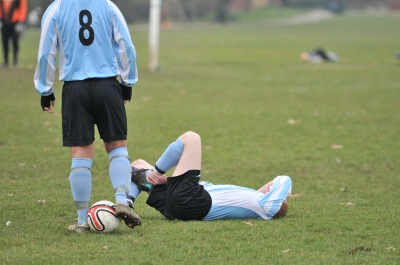I sprained my ankle, what do I do now?
Written by: Paul Kochoa, PT, DPT, OCS, CKTP, CGFI
Whether you’re an elite long-distance runner or a weekend warrior, you’re probably one of the many people who’ve had an ankle sprain. It can happen at any time, when you’re playing sports or doing any daily activity such as walking your dog.
A sprain is an injury to a ligament, which connects bone to bone and gives a joint static stability. In the ankle, the most commonly sprained ligament is the anterior talofibular ligament, or ATFL for short. This ligament sits on the outside of your ankle and is injured when it gets twisted. Sprains are classified according to severity from grade I (mild) to grade III (severe); as well as chronicity: acute (recent), chronic (ongoing problem), recurrent (sprain recurs frequently with little force). To fully diagnosis and rule out other severe issues, a physiotherapist can perform an evaluation to screen out major problems and instruct you on how to rehabilitate it. They can even refer you out to another medical professional if warranted.
In the meantime, if you get an ankle sprain, the first thing to do is follow the RICE method: Rest, Ice, Compression, Elevation. As soon as you can, get off your foot, and apply some ice with compression to the area, and keep it elevated above the level of your heart. Sitting down and propping it up on a table doesn’t count, lying on your back with your foot elevated on some pillows is best.
The rehabilitation process usually includes range of motion and stretching movements, strengthening exercises, and balance activities. With ankle sprains, return to sport and activity can be tricky. The ATFL is a major component of balance and for feedback of foot position. If this system is compromised, such as with an ankle sprain, deficits with balance and stability can linger and increase the risk of repeated sprains.
Sport specific activities and functional training should be part of the return to sport process. Proprioception (the ability to know where the limb is and its position without looking at it) is a key component of ankle function, balance, and it can prevent future sprains. A physiotherapist can help you train your proprioceptive system and let you know when you can return to sport or activity and make sure your ankle is strong and stable to prevent recurrence.
If you have any questions or have any other tips on how to fix or prevent ankle sprains, drop a comment here. If you would like more information, please call Professional Physical Therapy and Training at 973-270-7417. Our offices are located within the YMCA locations in Madison and Summit, NJ. You do not need to be a member of the YMCA to visit with us.
Image courtesy of Paul Gooddy / FreeDigitalPhotos.net